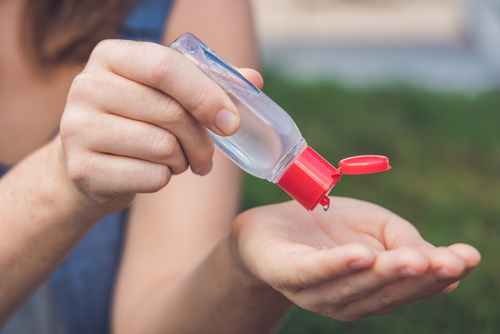Adolescents and Hand Sanitizer

Hand sanitizer seems like it should be the least of a parent's worries when it comes to substance abuse. However, the go-to solution for germ protecting and staving off viruses has proven to be toxic and even fatal for many children. High in alcohol concentration, hand sanitizer is an inconspicuous way for adolescents to get drunk.
When an adolescent in the home is abusing substances, it is their younger siblings who tend to suffer the most. Always looking up to their brothers and sisters, younger children want to imitate their sibling's behaviors. Too much attention, positive or negative, being paid to the older addicted adolescent can lead to a younger sibling acting out.
U.S. News & World Report
writes that exposure is most common in children under 6 years old who discover it at home or in a bag and drink it accidentally- sometimes by licking their hands after applying the sanitiser. Or, after viewing their adolescent sibling consuming it, they mirror their sibling's behaviors.
The article cites that exposure to hand sanitizer has increased in the last few years. In 2016, there were over 19,000 reports of hand sanitizer exposure, almost two thousand more reports than in 2011. Almost one and a half thousand cases from 2017 were intentional, meaning reports of people who didn't swallow the hand sanitiser on accident, but consumed it on purpose.
Alcohol is at a dangerously high content in hand sanitizer. For example, Purell, a leading brand of hand sanitizer, is waterless, an advertised point to indicate its potency for germ elimination. Purell is also 70% ethyl alcohol. Ethyl alcohol is the same as ethanol alcohol or the kind of alcohol created in alcoholic beverages. Drinking a type of alcohol or any alcoholic beverage which was 70% alcohol would not be appealing to most and would obviously be considered highly dangerous. Hand sanitizer is no different. Consuming even small amounts of hand sanitizer can lead to an automatic overdose on alcohol.
Why Do Adolescents Drink Hand Sanitizer?
Hand sanitizer certainly isn't the most appealing of beverage options. However, flavor is not the reason young people are reaching for the gels. The primary focus of consuming high alcohol content substances is to experience the intoxicating effects that they have. Risk taking and thrill seeking in adolescents is common as an independent trait. They can also develop as coping mechanisms for underlying issues such as depression, anxiety, or trauma.Stonewater Adolescent Recovery Center provides the premiere residential treatment program for adolescent addiction. Treating mind, body and spirit, our programs help clients build a foundation in faith and recovery. For more information, call 662-598-4214.

.jpg)

